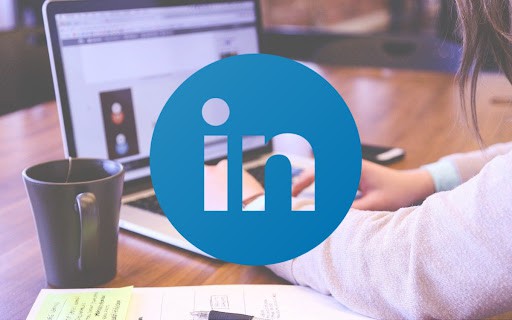How important is lead generation for business operation? Well, quite important. It provides the inflow of potential customers and can increase the business’s revenue in the long run. Even though it can be challenging for many companies, marketing and sales teams continue to advance their B2C and B2B lead generation.
In this regard, using LinkedIn for lead generation opens great opportunities. Why? A lot of specialists, experts, and opinion leaders hang out there. Besides, people look for advice and insights on this platform.
In this article, you will know how to set a LinkedIn lead generation strategy and which lead generation marketing strategies you can use to get effective results.
How to Generate Leads on LinkedIn
Once you have a well-developed profile, you can start devising a LinkedIn lead generation strategy suiting your goals. In any case, you will need to focus on the expertise and credibility, enlarge your network and provide value. However, the main strategies to generate leads will fall under three categories:
Outreach
The most straightforward tactic for B2B lead generation is concerned with marketing outreach. It is about finding and reaching the people who may be interested in your product or cooperation with you. It is also about extracting vital information about prospects.
If you use Linkedin for B2B lead generation via outreach, you will likely use direct messages or email marketing. Let’s consider each of them.
Sending messages to the people on the platform requires you to have a certain image and access premium features of LinkedIn. Why? With them, you will be able to send limitless InMails to LinkedIn leads and have fewer limitations on character count.
On the other hand, you can use email marketing. In this regard, you should find email addresses of targets, either with the help of a plugin or manually, and send them a convincing pitch offering value. Yet, to improve your chances, you should do research and gather data on LinkedIn leads to support your personalization efforts.
Content Strategy
Other lead generation tactics refer to the production and publication of insightful content pieces.
B2B lead generation on this platform is built on expertise, with the notion that people seek advice and solutions. Thus, to attract leads, marketers are likely to post case studies, organize educational events, and share insights in the comment section.
The common examples of using LinkedIn for lead generation refer to:
- Posting different materials. You can share your thoughts, professional pieces of advice, and recommendations or write great articles. The key is to provide value and present your product.
- Joining Groups. You can ask questions, write comments, and provide solutions, inviting people to your website or page.
- Engaging in other people’s comments. Also, you may share your thoughts and recommendations in the people’s posts. Yet, be sure to provide value and not sell.
- Organizing events. Lastly, B2B lead generation can start from a webinar, course, or digital event. LinkedIn is a common place for webinar promotion. There, you can share the details and invite people to subscribe, bringing them to your sales cycle.
Sponsored Ads
The last category of lead generation tactics refers to the application of targeting ads. LinkedIn has a good variety of them.
First, you have dynamic ads that appear on the right side of the page of the targets. It has a personalized approach at its core and allows inviting to the page inside or outside the platform. In particular, with them, you can focus on bringing more followers, directing traffic to your blog, or asking people to download lead magnets.
Secondly, you can start a Linkedin lead generation campaign with sponsored content. Using this function, images, videos, or text can appear in the feed with the sign “sponsored.” That way, you can promote your content or products and provide links to your website.
Also, there are Text Ads and Sponsored Messages that allow sharing content either as a separate notification on the right side of the page or a message/InMail in the target’s inbox.
That way, applying these B2B lead generation tactics, businesses can impact different sales cycle stages, referring to awareness, consideration, and decision.
How to Improve Lead Generation
Notably, you may be utilizing the above strategies to generate leads. However, there is always room for improvement. In this regard, you have different options. You can modify your image, add to the content, or impact efficiency. Check the tips below to use lead generation for business better.
- Improve your profile. In addition to filling out all the sections, craft a compelling summary and support your profile with quality photos matching your position.
- Optimize the content strategy. Your lead generation strategy can bring poor results because of content’s quality or visibility. Therefore, make sure to support the facts with hashtags, tag opinion leaders to comment, repurpose content and add infographics.
- Track your progress. Remember to monitor the results of any lead generation campaign you launch. Campaign Manager offers great insights into the performance and helps you retarget people later.
- Create templates for different groups. When you write the leads to connect or offer value, ensure your message is clear and has an excellent call to action. You should not sell but interest and provide value to the Linkedin leads. Also, think of personalization.
- Apply automation. Lastly, apply some automation software to help research or manage information. For instance, you can use Sales Navigator or such LinkedIn lead generation services as email finders, databases, or CRM systems to gather data on prospects from LinkedIn and organize them before sending emails.
Author BIO
Vlada Korzun
+4 years I have been working in content marketing mainly in B2B, international market. I’ve already had experience with 10 long-term projects (both freelance and full-time). Now I work in a SaaS for salespeople and take side projects. I mentored 3 people, and continue sharing my knowledge in various forms.
